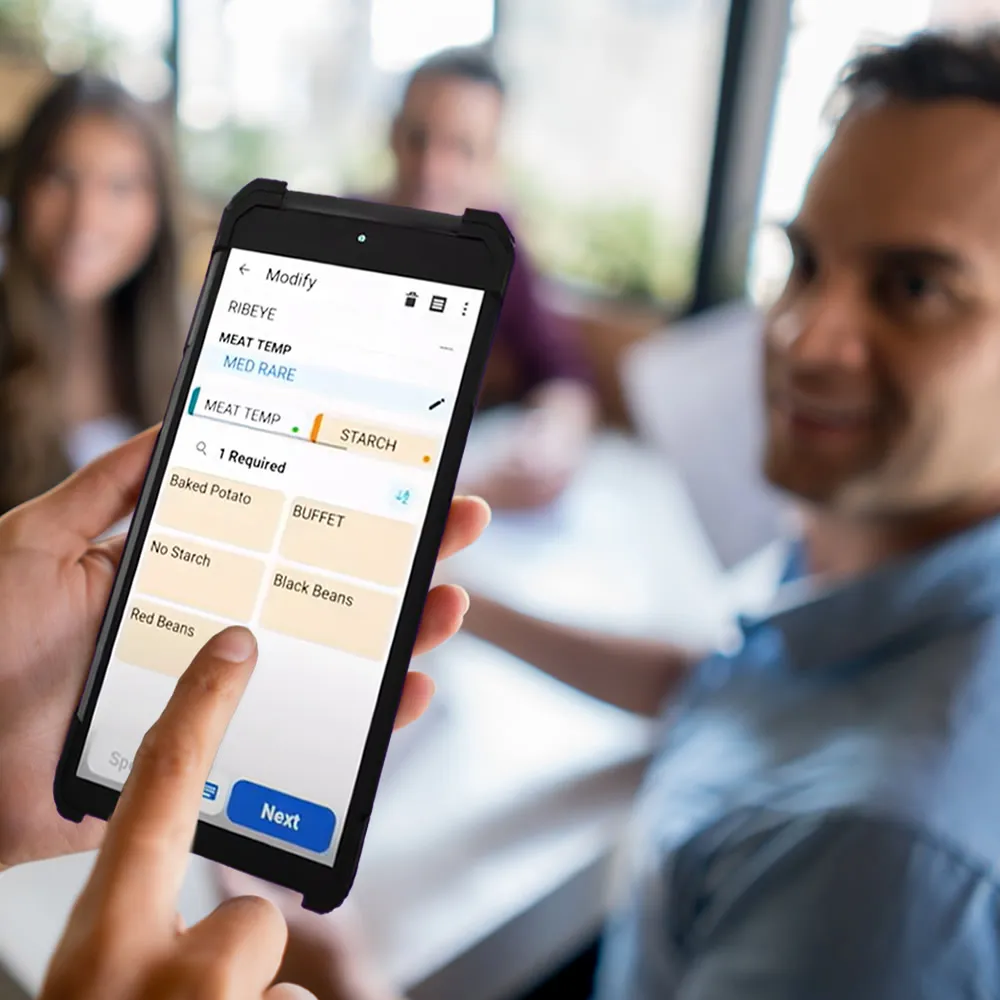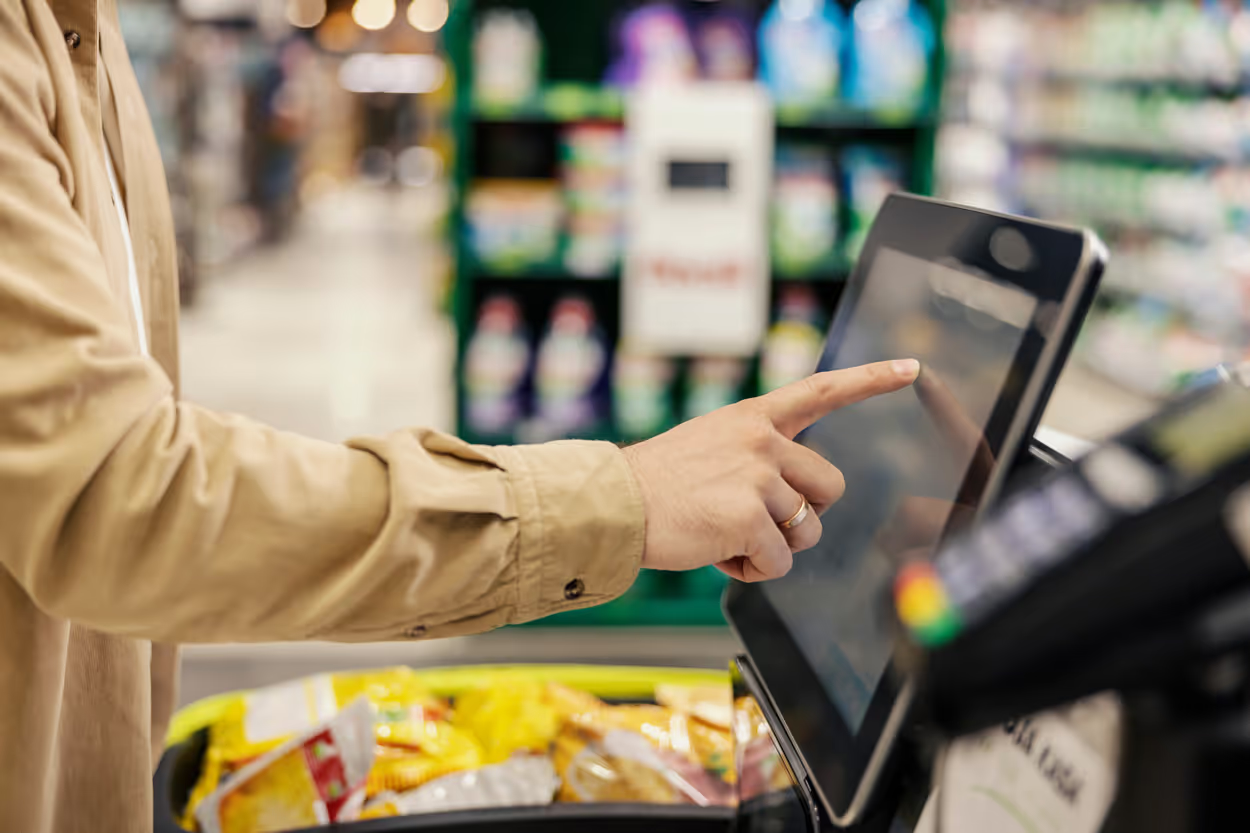What if your customers stopped seeing your c-store as just a place to stop for fuel? What if, instead, they visit your store because they think of you first for many of their needs, from fuel to essentials to hot, prepared dinner options?
Giving them a unified and amazing customer experience, seamless and personalized from the pump to their payment to your loyalty program, is going to help you get there. And it’ll go a long way to helping customers see you as a go-to neighborhood destination.
Adopt technology for an engaging, personalized forecourt and store experience.
Consumers have a long list of preferences—and not having to wait ranks high on it. But they also understand that sometimes it’s unavoidable, like waiting at the pump for their gas tank to fill up.
The good news is you can even make waiting a great experience. Because fueling up is a perfect time to engage with customers either through forecourt technology that delivers personalized offers and video content right at your pump or via your mobile app that delivers loyalty and foodservice options. Imagine: you pull up to the pump, unlock it with your mobile app and then see your name on the pump display screen next to an offer for your favorite hot sandwich from the store’s foodservice counter. That’s the kind of experience loyal customers remember.
Indeed, reimaging the pump experience like this is the future for c-stores (see how far gas pumps have come). And there are plenty of tech-filled solutions you can rely to not only reimagine your customer’s pump experience, but your entire store.
Digital signage, tracking systems and capturing behavior.
Talk about working together. There are several technologies that, when synced, present a big leap from simply running ads on TV screens at the pumps. Today, c-store owners are investing in digital signage that changes images as customers move around their store and forecourt. By pairing it with “proximity beacons,” you can tailor what your customers see as they approach items they’ve previously purchased.
And, with a great customer loyalty program that has heavy adoption, you can easily glean information about your customers to tailor the ads—and not just on your digital screens, but through pop up ads on their smart phones, too. Some c-store owners are also investing in digital billboards that can change as their customers drive near them, engaging them to drive to their store. Using these technologies together takes engagement and personalization to a new level.
Tech that supports flawless curbside pickup.
In the not so distant future, there’s a chance that not only will your customers want to remain in their cars, they may not even be in it. With self-driving cars, customers can be in the comfort of their homes as their cars drive to your store for them. Combine that with how COVID-19 has increased the demand for curbside pickup, and it’s clear that your curbside offering needs to be seamless with every component of your business. That includes all your digital technology—from a mobile app for ordering and providing alerts when the customer is on the way to technology in the forecourt that lets you know they’ve arrived with digital signage directing them to the right place for pickup.
A POS system that supports the digital wallet.
It’s taken less than a year for “contactless payments” to become old news. If you haven’t already, it’s past time to invest in a point-of-sales system that takes all the mobile payments found in your customer’s digital wallet (i.e., their phone). Already on the rise, COVID-19 has pushed contactless payments into something your customers now expect, and they could go to another c-store next time if you don’t offer it.
Blockchain technology for your back office.
By bringing technology to your back office using blockchain you can fill in the gaps when unifying your c-store. Blockchain is a technology that essentially takes digital records (called blocks) that are cryptographically linked to other blocks. It drives serious operational efficiency by automatically managing, organizing and recording transactions—and that reduces errors and manual entry, saving you time and money.
Use EMV to improve overall security.
For you and your customers, payment security that limits fraud is always a priority and that’s why EMV technology is important to adopt—particularly now that it’s officially mandated for c-stores making your store liable for chargebacks.
EMV, the microchip technology that makes debit and credit cards more secure was originally named after Europay, Mastercard and Visa, but it’s now managed by a larger group of financial companies, including Visa and Mastercard with the additions of JCB, American Express, Discover and China UnionPay. And there is good reason why, they are mandating the use of EMV: on average the magnetic stripe was costing them $400 million per year.
EMV security largely comes from a one-time use code that changes every time the card is used—that makes it much more difficult for a thief to lift your customer’s information. EMV also works in conjunction with tokenization (the use of “token” information that protects more sensitive information). By securing your customers’ card transactions, you also help keep transaction costs down and protect your brand.
EMV can also help you do more than reduce fraud and increase secure payments. With a customer engagement platform that works with your EMV system you can engage your customers, push your loyalty programs, gain more chances to get customers into your store—and increase revenue.
On top of the security it brings and the added ways you can increase customer engagement—EMV also works in conjunction with near field communication, the technology that lets two separate devices communicate. Why is that important? It enables contactless payments—the way your customers want to pay now and in the future.
Bringing it all together for a refueled customer experience
Here’s a likely future scenario for what your customers will want in a few years: The workday is done and they’ve got errands to run. Their dry cleaning for an important meeting needs to be picked up, along with a quick, healthy dinner—but they need to get fuel first.
So, they pick up their phone, push a few buttons and send their car out to your store where it pulls into a stall and syncs with an automated gas pumping system as two employees, one with their dry cleaning and the other with your customer’s groceries, waits for a door to open. Your customer gets an alert on their phone, presses a button and the car door opens. Your employees set the items carefully in the car just as the gas tank has filled. They close the door it locks and the car leaves.
While that level of change isn’t here, yet it’s definitely heading in that direction. By working to unify your c-store, every aspect of it, you’ll be prepared to meet the future head on.




